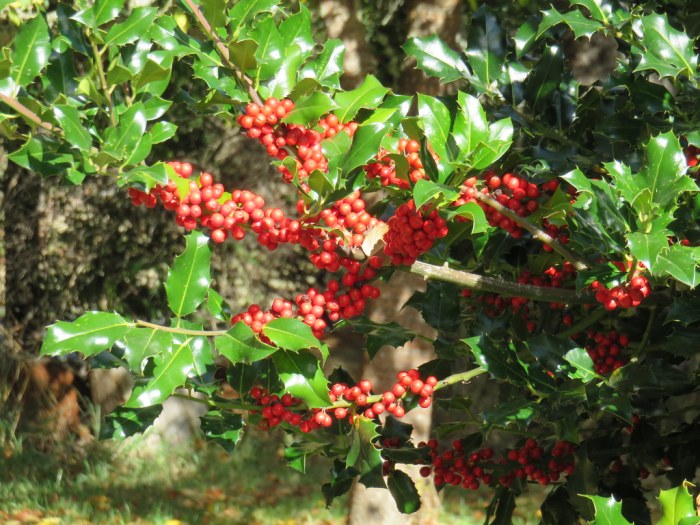Last month margo bought a tree – Last month, Margo bought a tree, and with that simple act, she embarked on a journey that would bring joy, beauty, and environmental benefits to her life and community. From the moment she carefully selected her sapling to the day she planted it in her backyard, Margo’s tree has been a source of wonder, growth, and inspiration.
In the following paragraphs, we’ll explore the steps involved in Margo’s tree-planting adventure, from site selection and preparation to ongoing care and maintenance. We’ll also discuss the environmental impact of Margo’s tree, its aesthetic and recreational value, and the future growth and considerations that come with owning a tree.
Margo’s Tree Purchase

Last month, Margo made a significant purchase by acquiring a tree. Her decision to buy a tree was motivated by her desire to enhance the aesthetic appeal of her garden and contribute to the local ecosystem.
After careful consideration, Margo decided to purchase a Japanese maple tree (Acer palmatum). Known for its vibrant foliage and graceful form, the Japanese maple is a popular choice for ornamental gardens. The tree Margo bought was a young specimen, approximately 2 meters tall, with a well-developed root system.
Location of Purchase
Margo purchased the tree from a reputable local nursery that specializes in the cultivation and sale of ornamental plants. The nursery had a wide selection of trees to choose from, and Margo was able to consult with knowledgeable staff who provided guidance and advice on selecting the right tree for her needs.
Tree Planting and Care

To ensure the health and longevity of Margo’s tree, it’s crucial to carefully consider its planting and ongoing care. This involves selecting the right location, preparing the soil, and implementing proper watering, fertilizing, and pruning techniques tailored to the specific species of the tree.
Site Selection and Preparation
The first step in planting Margo’s tree is selecting an appropriate location. Factors to consider include:
- Sunlight:Determine the tree’s light requirements and choose a spot that provides the necessary amount of sunlight for optimal growth.
- Soil:The soil should be well-drained and have a pH level suitable for the tree species.
- Space:Ensure there is sufficient space for the tree to grow to its full potential without encroaching on buildings or other structures.
- Underground utilities:Call 811 before digging to mark the location of any underground utilities, such as gas lines or electrical wires.
Once the site is selected, prepare the soil by digging a hole twice as wide as the root ball and just as deep. Loosen the soil at the bottom of the hole and amend it with organic matter, such as compost or peat moss, to improve drainage and fertility.
Watering
Regular watering is essential for the health of Margo’s tree. The frequency and amount of water will vary depending on the tree species, soil conditions, and weather. In general, newly planted trees require more frequent watering, especially during the first growing season.
As the tree matures, it will become more drought-tolerant and require less frequent watering.
Fertilizing
Fertilizing provides nutrients to Margo’s tree and helps it grow healthy and strong. Fertilize the tree according to the manufacturer’s instructions, using a fertilizer specifically formulated for the tree species. Avoid over-fertilizing, as this can damage the tree.
Pruning
Pruning removes dead or diseased branches and encourages healthy growth. Prune Margo’s tree according to the recommended pruning techniques for its species. This may involve removing branches that are rubbing against each other, crossing branches, or growing in an undesirable direction.
Proper pruning helps maintain the tree’s shape and prevents disease.
Environmental Impact: Last Month Margo Bought A Tree
Margo’s purchase of a tree has significant environmental benefits, positively impacting the local ecosystem and contributing to global sustainability.
Last month, Margo purchased a tree, hoping to spruce up her garden. However, she soon realized she needed guidance on tree care. That’s when she stumbled upon a helpful resource: holt spanish 1 answer key pdf . With its comprehensive information on tree care, Margo’s tree is now thriving, adding a touch of greenery to her backyard.
One of the primary benefits is carbon sequestration. Trees absorb carbon dioxide from the atmosphere during photosynthesis, storing it within their tissues. As the tree grows, it continues to remove carbon dioxide, contributing to the reduction of greenhouse gases and mitigating climate change.
Air Purification
Trees also play a crucial role in air purification. They absorb pollutants like ozone, nitrogen oxides, and particulate matter from the air. The leaves of the tree act as filters, trapping these pollutants and releasing clean oxygen into the environment.
This process improves air quality, reducing respiratory issues and promoting overall well-being.
Local Wildlife and Biodiversity
The presence of trees in an area enhances local wildlife and biodiversity. They provide habitat for a variety of species, including birds, insects, and small mammals. The tree’s canopy offers shelter and nesting sites, while its roots create a favorable environment for soil organisms.
The tree also serves as a food source, with its fruits, nuts, and leaves providing sustenance for wildlife.
Climate Change Mitigation
Trees are essential in mitigating climate change. They absorb carbon dioxide, a major greenhouse gas, and release oxygen through photosynthesis. This process helps regulate the Earth’s temperature, reducing the effects of global warming. Additionally, trees provide shade, which reduces the urban heat island effect and lowers energy consumption for cooling buildings.
Sustainable Living, Last month margo bought a tree
Trees promote sustainable living by providing renewable resources. Their wood can be used for construction, furniture, and other products, reducing the need for non-renewable materials. Additionally, trees can be used for biomass energy, providing a sustainable alternative to fossil fuels.
Aesthetic and Recreational Value

Margo’s newly planted tree instantly elevates the aesthetic appeal of her property and the surrounding area. Its lush foliage creates a vibrant contrast against the backdrop of her home, adding depth and dimension to the landscape. The tree’s graceful form and sweeping branches enhance the curb appeal, creating a welcoming and inviting atmosphere.
Beyond its aesthetic charm, the tree offers a range of recreational benefits. It provides a shady sanctuary on hot summer days, offering a respite from the sun’s glare. Its sturdy branches can support swings or hammocks, creating a playful space for children and a relaxing retreat for adults.
The tree’s presence encourages outdoor gatherings, providing a natural focal point for picnics, barbecues, and family celebrations.
Incorporating the Tree into Landscaping
To maximize the visual appeal of Margo’s tree, consider incorporating it into her landscaping design in the following ways:
- Create a Focal Point:Plant the tree as a solitary specimen in a central location, allowing its unique form and foliage to take center stage.
- Enhance Symmetry:Plant a pair of trees symmetrically on either side of a walkway or entrance, creating a sense of balance and formality.
- Frame a View:Position the tree to frame a desirable view, such as a garden, pond, or distant landscape, drawing the eye to the natural beauty beyond.
- Add Layers:Plant smaller shrubs and flowers around the base of the tree, creating a layered effect that adds interest and depth to the landscape.
- Provide Lighting:Illuminate the tree at night with uplighting or fairy lights to create a magical and enchanting ambiance.
Future Growth and Considerations

Margo’s tree, being a living organism, will undergo significant growth and changes throughout its lifespan. Understanding its expected growth patterns and potential challenges is crucial for ensuring its health and longevity.
The growth rate and lifespan of Margo’s tree will vary depending on its species and the care it receives. With proper care, many tree species can live for decades or even centuries. As the tree matures, it will develop a larger root system and a broader canopy, potentially affecting its surroundings.
Root Growth and Canopy Spread
As the tree’s roots grow, they can spread laterally, potentially affecting nearby structures or underground utilities. Similarly, the canopy spread can create shade, potentially impacting the growth of other plants or blocking sunlight from buildings. It is important to consider these factors when choosing a planting location and to regularly prune the tree to control its size and shape.
Pest Management
Mature trees may become more susceptible to pests and diseases. Regular inspections and preventative measures, such as proper watering and fertilization, can help minimize the risk of infestation. If pests or diseases do occur, prompt treatment is essential to prevent long-term damage to the tree.
Long-Term Planning and Maintenance
Ensuring the health and longevity of Margo’s tree requires long-term planning and maintenance. This includes regular watering, fertilization, pruning, and pest management. By investing in proper care, Margo can enjoy the benefits of her tree for many years to come.
Clarifying Questions
What type of tree did Margo buy?
Margo bought a Japanese maple tree, known for its vibrant foliage and compact size.
Where did Margo plant her tree?
Margo planted her tree in her backyard, where it receives ample sunlight and has room to grow.
How often should Margo water her tree?
Margo should water her tree deeply and infrequently, especially during the first year after planting.